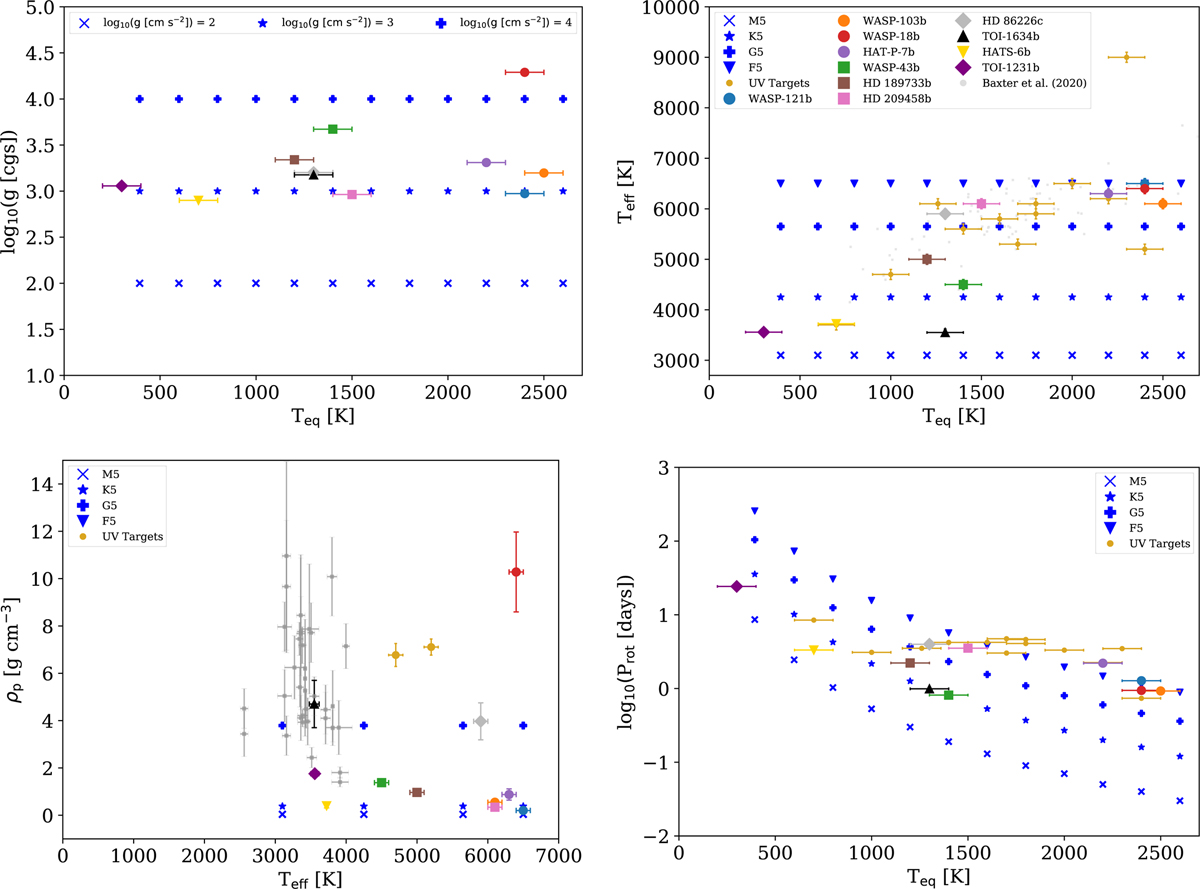Fig. 1

Download original image
System and global parameters for selected planets in comparison to the 3D GCM model grid parameter space from Baeyens et al. (2022). All model planets are tidally locked such that Prot=Porb. Selected planets include hot (WASP-43b, HD 189733b, HD 209458b) and ultra-hot (HAT-P-7b, WASP-18b, WASP-103b, WASP-121b) Jupiters, sub-Neptunes (HD 86226c, TOI-1634b), a Neptune-like planet (TOI-1231b), and a warm Saturn (HATS-6b). We also include the sample of hot and the ultra-hot Jupiters from Table 1 in Baxter et al. (2020) in the Teff vs Teq plot (top right) as smaller light grey points and a sample of small M dwarf orbiting planets from exoplanet.eu in the ρP vs Teff plot (bottom left) as grey points with error bars. Potential UV targets (dark golden dots with error bars) are included for comparison (Tables C.1, C.2). The equilibrium temperature given in the literature have been rounded to the next 100 K. References: WASP-103 b: Gillon et al. (2014); WASP-121 b: Delrez et al. (2016); WASP-18 b: Hellier et al. (2009), Sheppard et al. (2017); WASP-43 b: Gillon et al. (2012); HAT-P-7 b: Van Eylen et al. (2012), Pál (2009); HD 209458 b: Torres et al. (2008); HD 189733b: Torres et al. (2008); HD 86226c: Teske et al. (2020); TOI-1634b: Cloutier et al. (2021); HATS-6b: Hartman et al. (2015); TOI-1231b: Burt et al. (2021); The rotational periods for the GCM models are taken from Baeyens et al. (2022).
Current usage metrics show cumulative count of Article Views (full-text article views including HTML views, PDF and ePub downloads, according to the available data) and Abstracts Views on Vision4Press platform.
Data correspond to usage on the plateform after 2015. The current usage metrics is available 48-96 hours after online publication and is updated daily on week days.
Initial download of the metrics may take a while.


